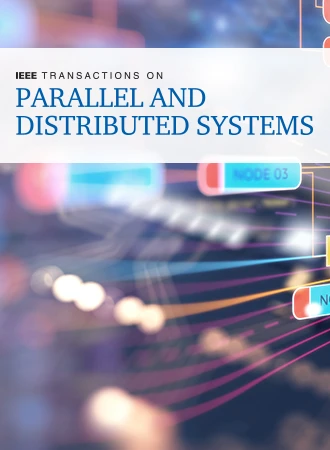利用错误:反思用于物联网异常检测的集群联合学习
IF 5.6
2区 计算机科学
Q1 COMPUTER SCIENCE, THEORY & METHODS
IEEE Transactions on Parallel and Distributed Systems
Pub Date : 2024-03-21
DOI:10.1109/TPDS.2024.3379905
引用次数: 0
摘要
聚类联合学习(CFL)是解决联合学习(FL)空间领域非 IID 问题的一种有前途的解决方案。然而,现有的联合学习解决方案忽视了时间域的非 IID 问题,也缺乏对时间效率的考虑。在这项工作中,我们提出了一种名为 ClusterFLADS 的新方法,它利用不恰当全局模型的错误预测,以及温度缩放和灾难性遗忘的知识,来揭示(不同群集的)训练数据和测试数据之间的分布相似性。此外,我们还利用神经网络学习过程中每一层的作用,设计了一种高效的特征提取方案。通过战略性地选择模型参数和使用 PCA 进行降维,ClusterFLADS 有效地提高了聚类速度。我们使用真实世界中各种场景的物联网跟踪数据对 ClusterFLADS 进行了评估。结果表明,ClusterFLADS 能准确、高效地聚类客户端,在空间和时间域的各种数据分布中实现 100% 的真阳性率和较低的误报率。本文章由计算机程序翻译,如有差异,请以英文原文为准。
Taking Advantage of the Mistakes: Rethinking Clustered Federated Learning for IoT Anomaly Detection
Clustered federated learning (CFL) is a promising solution to address the non-IID problem in the spatial domain for federated learning (FL). However, existing CFL solutions overlook the non-IID issue in the temporal domain and lack consideration of time efficiency. In this work, we propose a novel approach, called
ClusterFLADS
, which takes advantage of the false predictions of the inappropriate global models, together with knowledge of temperature scaling and catastrophic forgetting to reveal distributional similarities between the training data (of different clusters) and the test data. Additionally, we design an efficient feature extraction scheme by exploiting the role of each layer in a neural network's learning process. By strategically selecting model parameters and using PCA for dimensionality reduction,
ClusterFLADS
effectively improves clustering speed. We evaluate
ClusterFLADS
using real-world IoT trace data in various scenarios. Our results show that
ClusterFLADS
accurately and efficiently clusters clients, achieving a 100% true positive rate and low false positives across various data distributions in both the spatial and temporal domains.
求助全文
通过发布文献求助,成功后即可免费获取论文全文。
去求助
来源期刊

IEEE Transactions on Parallel and Distributed Systems
工程技术-工程:电子与电气
CiteScore
11.00
自引率
9.40%
发文量
281
审稿时长
5.6 months
期刊介绍:
IEEE Transactions on Parallel and Distributed Systems (TPDS) is published monthly. It publishes a range of papers, comments on previously published papers, and survey articles that deal with the parallel and distributed systems research areas of current importance to our readers. Particular areas of interest include, but are not limited to:
a) Parallel and distributed algorithms, focusing on topics such as: models of computation; numerical, combinatorial, and data-intensive parallel algorithms, scalability of algorithms and data structures for parallel and distributed systems, communication and synchronization protocols, network algorithms, scheduling, and load balancing.
b) Applications of parallel and distributed computing, including computational and data-enabled science and engineering, big data applications, parallel crowd sourcing, large-scale social network analysis, management of big data, cloud and grid computing, scientific and biomedical applications, mobile computing, and cyber-physical systems.
c) Parallel and distributed architectures, including architectures for instruction-level and thread-level parallelism; design, analysis, implementation, fault resilience and performance measurements of multiple-processor systems; multicore processors, heterogeneous many-core systems; petascale and exascale systems designs; novel big data architectures; special purpose architectures, including graphics processors, signal processors, network processors, media accelerators, and other special purpose processors and accelerators; impact of technology on architecture; network and interconnect architectures; parallel I/O and storage systems; architecture of the memory hierarchy; power-efficient and green computing architectures; dependable architectures; and performance modeling and evaluation.
d) Parallel and distributed software, including parallel and multicore programming languages and compilers, runtime systems, operating systems, Internet computing and web services, resource management including green computing, middleware for grids, clouds, and data centers, libraries, performance modeling and evaluation, parallel programming paradigms, and programming environments and tools.
 求助内容:
求助内容: 应助结果提醒方式:
应助结果提醒方式:


